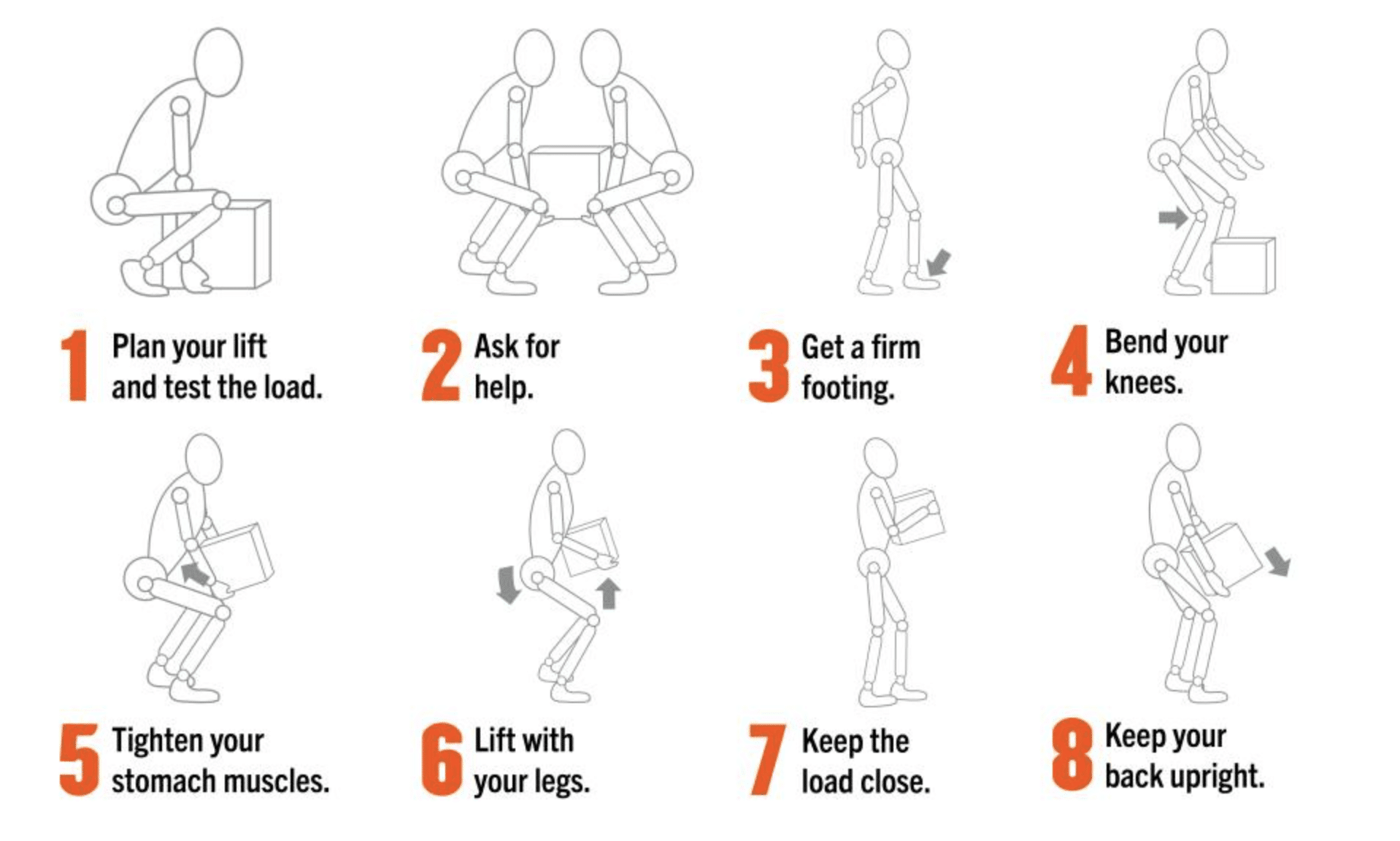

Proper Lifting Techniques to Prevent Back Pain
Back pain is a common issue, often resulting from improper lifting techniques. Whether lifting objects at work, during exercise, or at home, using proper lifting techniques can prevent strain on the back muscles and ligaments. Here, we explore the best practices for lifting safely and effectively.
Why Proper Lifting Techniques Matter
Improper lifting can lead to muscle strains, ligament sprains, herniated discs, and other back injuries. By employing proper lifting techniques, individuals can:
• Minimize the risk of injury
• Maintain a healthy spine
• Reduce unnecessary stress on the back
• Enhance overall physical performance
Steps for Proper Lifting Techniques
1. Plan Ahead
• Assess the Load: Before lifting, determine if the object is too heavy or awkward to handle alone. If necessary, ask for help or use lifting equipment.
• Clear the Path: Ensure the pathway to the destination is clear of obstacles to prevent trips and falls.
2. Position Your Body
• Stand Close to the Object: Position yourself as close to the object as possible to reduce the strain on your back.
• Feet Placement: Place your feet shoulder-width apart for a stable base of support. One foot can be slightly ahead of the other for better balance.
3. Bend at the Knees
• Squat Down: Bend at your knees and hips, not your waist. Keep your back straight and maintain the natural curve of your spine. Squatting down allows your legs to do the lifting instead of your back.
4. Grip the Object Firmly
• Secure Grip: Use both hands to get a firm grip on the object. If the object is large or awkward, consider using gloves to improve your grip.
5. Lift with Your Legs
• Engage Leg Muscles: Straighten your legs slowly to lift the object, keeping your back straight and your core engaged. Your leg muscles are stronger and more capable of handling the load than your back muscles.
6. Keep the Object Close
• Hold Close to Your Body: Keep the object as close to your body as possible to minimize the strain on your back. Holding the object away from your body increases the lever arm and the stress on your spine.
7. Avoid Twisting
• Turn with Your Feet: If you need to change direction, move your feet to turn your entire body instead of twisting your back. Twisting while lifting can cause serious injuries.
8. Lowering the Object
• Reverse the Steps: When putting the object down, reverse the lifting process. Squat down by bending at your knees and hips while keeping your back straight. Place the object down gently and securely.
Additional Tips for Safe Lifting
• Know Your Limits: Don’t attempt to lift objects that are too heavy for you. Use team lifting or mechanical aids for heavy or bulky items.
• Warm-Up: Perform stretching and warm-up exercises before engaging in lifting activities to prepare your muscles.
• Maintain Good Posture: Practice good posture throughout the day to keep your back healthy and reduce the risk of injury.
• Use Proper Equipment: Utilize lifting aids such as dollies, hand trucks, and lifting belts when necessary.
Exercises to Strengthen Your Back and Core
Strengthening your back and core muscles can improve your lifting capabilities and reduce the risk of injury. Consider incorporating the following exercises into your routine:
1. Planks: Hold a plank position to engage and strengthen your core muscles.
2. Bridges: Lie on your back with your knees bent and lift your hips towards the ceiling to strengthen your lower back.
3. Deadlifts: Perform deadlifts with proper form to strengthen your back and leg muscles.
4. Bird-Dogs: On your hands and knees, extend one arm and the opposite leg simultaneously to enhance core stability.
Conclusion
Using proper lifting techniques is essential for preventing back pain and injury. By following the steps outlined above, you can lift objects safely and maintain a healthy back. Remember to plan ahead, use your legs for lifting, avoid twisting, and keep the object close to your body. Incorporating exercises to strengthen your back and core will further enhance your lifting abilities and reduce the risk of injury. If you experience persistent back pain, consult a healthcare professional for personalized advice and treatment.








